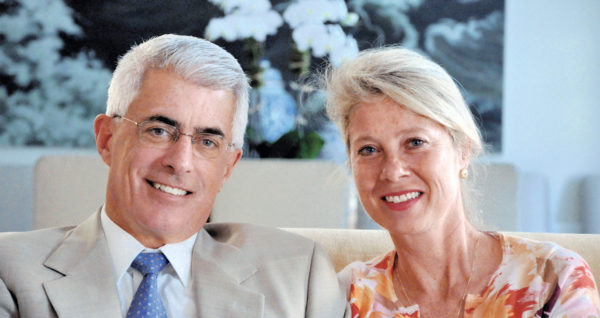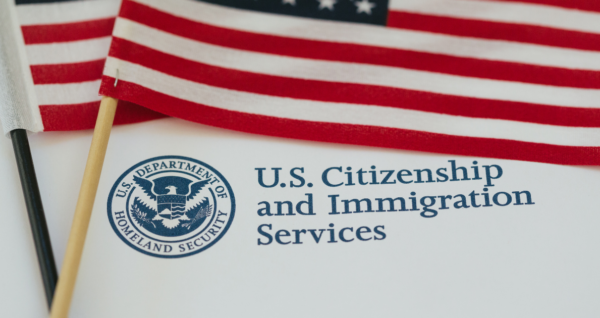‘Revenge porn’ or ‘cyber sexual abuse’?
Cyber sexual abuse, commonly known as “revenge porn,” is often misnamed and misunderstood. In fact, it is difficult to find a simple, coherent definition for this form of abuse. According to the Oxford English Dictionary, “revenge porn” is: “Revealing or sexually explicit images or videos of a person posted on the Internet, typically by a former sexual partner, without the consent of the subject and in order to cause them distress or embarrassment.”
But the term “revenge porn” name misrepresents the crime for several reasons. First, it is not about revenge, and second, it is not about porn. Revenge suggests the victim did something to deserve this crime, in effect placing blame on the victim. Less a tool for revenge, cyber sexual abuse is more often used as a way to maintain control over the victim.
For example, thirty-year-old Amanda’s physically abusive husband constantly told her that if she ever tried to leave him he would share damaging photos of her with her family, friends, and even use them in attempts to gain custody. When she finally did leave, he did just that: posted photos of her—even ones taken without her knowledge—on social media. Now, Amanda lives in constant fear, wondering who might see these photos and how might it affect her and her children.
This example drives home our second issue with the term ‘revenge porn’. Porn, though this may not always be the case, is generally considered consensual. Like in Amanda’s case and in others Sanctuary has seen, the photos and videos that are shared are sometimes taken unbeknownst to the victim or are photoshopped or “spoofed” (manipulated using photo editing software or other technology). Even if the photos are taken consensually – i.e. within the context of an intimate relationship – posting these photos online without the consent (and often without the knowledge) of the victim, is a nonconsensual act. For these reasons, we must call this crime what it is: cyber sexual abuse.
Over the last few years, cyber sexual abuse has become an increasingly common form of abuse due the omnipresence of social media in our lives. It’s also one we’ve seen highlighted in the media. From Jennifer Lawrence’s computer hack to Rob Kardashian posting nude photos of Blac Chyna, these instances have revealed the dire need for both legal protections and a better societal understanding of cyber sexual abuse.
Many people are quick to assume that every photo has been taken with the consent of the victim. Others think cyber sexual abuse can be written off as a joke, or that if their state has no law against it, it is okay to post photos of this nature.
Sanctuary attorney Lindsey Song, who has represented a number of victims of cyber sexual abuse in Family Court and with criminal justice advocacy, is the co-chair of the citywide Cyber Sexual Abuse Task Force. Below, she helps break down some of the stigmas surrounding victims of this form of abuse and tells us the five things we may not have known about cyber sexual abuse.
1. Cyber sexual abuse is not just a millennial issue
There are many ways in which someone can become a victim of cyber sexual abuse, Song warns, and they can be anyone from a teen sexting to an eighty-year-old in a photoshopped image.
For example, thirty-five-year-old Molly did not send, or even take, a naked photo when she became a victim of cyber sexual abuse. Her ex-boyfriend photoshopped a photo of her face onto naked images he found online, and then sent those photos to people in her hometown where Molly was ostracized from her entire family and support system. She was then forced to rely on her abuser financially.
When Betty, a 60-year-old woman, broke up with her abusive boyfriend, he reacted by sending an intimate photo to multiple men who then tried to contact Betty online. The situation escalated until Betty had to quit her job as a nurse out of fear that her abuser would continue to send the photo to her coworkers. A New York police officer told her that this was her fault for sending the photo in the first place.
Some example of cyber sexual abuse include when a photo is posted online, shown to others, or disseminated, and that photo was:
- Taken with the consent of the victim but posted without it
- Taken without the victim knowing (i.e. the victim was sleeping or was the subject of hidden cameras)
- Stolen from a victim’s computer or private accounts
- An image that is doctored, where someone has put the victim’s face on someone else’s body or otherwise made the photo appear to be of the victim when it is not
- The result of forced production of an image (i.e. drugging a victim)
The one thing each of these victims have in common? “Victim-blaming in each of these situations needs to stop, because none of those victims consented,” Song said
2. A cyber-attack never truly has an endpoint
Song tells us that cyber sexual abuse can be “life-ruining in ways you don’t expect,” as cyber sexual abuse has “no beginning and end.” This often leaves victims fearful that more and more people will gain access to the photos. Unfortunately, no matter how tirelessly the victims and their lawyers work to remove the photos from the Internet, “a cyber-attack never truly ends” as the photos may be shared across multiple sites and platforms, screenshotted by viewers, downloaded onto various devices, and the full reach of the images is never truly known.
3. Cyber sexual abuse is not necessarily just photos or videos
Cyber sexual abuse does not just mean one photo is posted and it doesn’t necessarily mean only photos or videos. Attackers can post addresses, places of business, phone numbers, and other personal information so that strangers subsequently stalk the victim, sometimes demanding sex or harassing the victim in other ways. Song says that as a victim, there is a “constant weight on your shoulders.” Some of her clients have been forced to “change their names, move from their homes, and even change their children’s names,” while others have been excommunicated from their families and communities and even attempted suicide.
4. It is not the victim’s fault
This one should go without saying, but many judge victims for “allowing” the photos to exist in the first place. As Song points out, however, if a person gives their personal financial information to an accountant so that the accountant could do their taxes and then the accountant posted that private information on the Internet, everyone would deem this unacceptable.
As a society, we understand and frequently utilize the concept of specific and selective consent. It is only in the context of sexuality and the human body that this point gets blurry. In some instances the victim doesn’t even know the photo is being taken. Many attackers also use threats such as sending photos to employers and family members in an effort to blackmail their victims. This is why Song urges us to remember “not to slut-shame, not to victim-blame, and that it is illegal to discriminate based on gender-based violence, which is what this is.”
5. The fear never goes away
A victim can obtain an order of protection to prevent dissemination and can report the crime to law enforcement. Victims can also contact websites directly to have nonconsensual pictures and videos taken down. Still, victims often carry around the fear of another post or another e-mail going up worrying and waiting for another attack.
For instance, when Celia decided to enter a beauty competition, her abusive ex-boyfriend decided to post videos of her engaged in sexual acts—taken without her knowledge or consent—onto pornography websites. He said that he did this in order to “make sure she never lived a normal life ever again.” It worked. Now, Celia is terrified to live her regular life, constantly in fear of what could happen if she upsets her abuser. Even though she was able to flee the relationship, her abuser continues to control her life, and will continue to do so until the law is changed to punish him for this horrific abuse.
[UPDATE] In late 2017, Survivor Leader Nathaly and Sanctuary helped pass New York City’s cyber sexual abuse bill, which is being used every day. Today we proudly celebrate our work and the work of others in the passage of a New York State bill that provides many more survivors like Nathaly with the legal recourse to seek relief from the flood of online harassment that they have long been denied.
—
If you or anyone you know is a victim of cyber sexual abuse, please reach out to Sanctuary for Families for legal assistance, clinical support, and other resources.
To get involved in our advocacy around cyber sexual abuse, please email Lindsey Song at lsong@sffny.org or Nicole Fidler at nfidler@sffny.org to join the citywide Cyber Sexual Abuse Task Force.
Lauren Altus is a communications intern at Sanctuary and a recent graduate from Johns Hopkins University.
 Originally from a small town in Texas, Lynn is a graduate of Harvard Law School. For many years she enjoyed careers in corporate law and investment banking before taking time off to raise her family and pursue volunteer work for various human rights organizations. Several years ago Lynn took up photography in earnest, and quickly garnered international acclaim for her fine arts images.
Originally from a small town in Texas, Lynn is a graduate of Harvard Law School. For many years she enjoyed careers in corporate law and investment banking before taking time off to raise her family and pursue volunteer work for various human rights organizations. Several years ago Lynn took up photography in earnest, and quickly garnered international acclaim for her fine arts images. After graduating from Harvard Law School, John joined the Litigation Department of Wachtell, Lipton, Rosen & Katz. Over the last 25 years, John has represented numerous Fortune 500 corporations, major financial institutions and senior executives in SEC and other regulatory enforcement proceedings, as well as white-collar criminal investigations, complex securities litigations, and internal investigations. Despite the workload, John has always made time for the issues he cares about and has taken on numerous pro bono cases for Sanctuary over the years.
After graduating from Harvard Law School, John joined the Litigation Department of Wachtell, Lipton, Rosen & Katz. Over the last 25 years, John has represented numerous Fortune 500 corporations, major financial institutions and senior executives in SEC and other regulatory enforcement proceedings, as well as white-collar criminal investigations, complex securities litigations, and internal investigations. Despite the workload, John has always made time for the issues he cares about and has taken on numerous pro bono cases for Sanctuary over the years.




